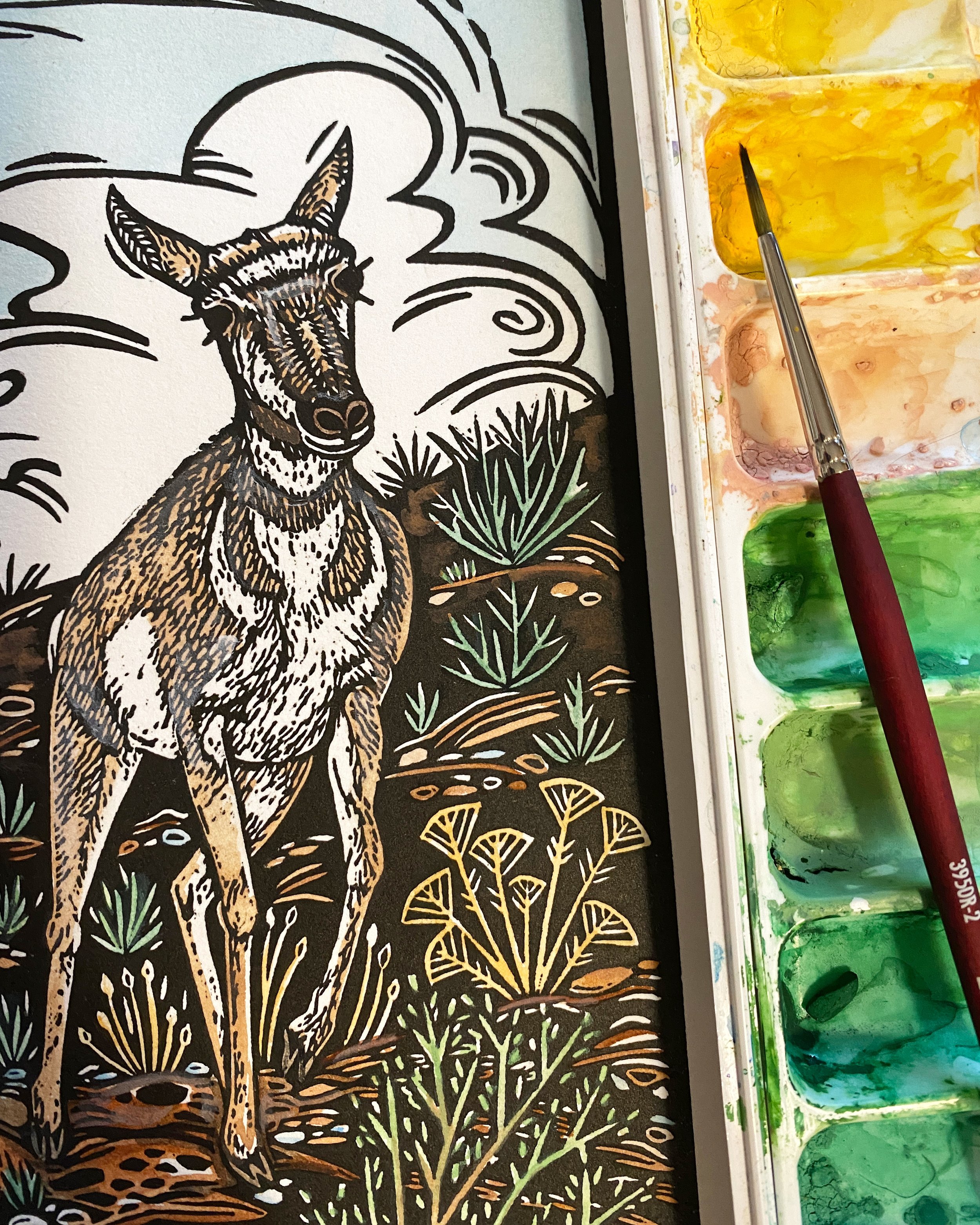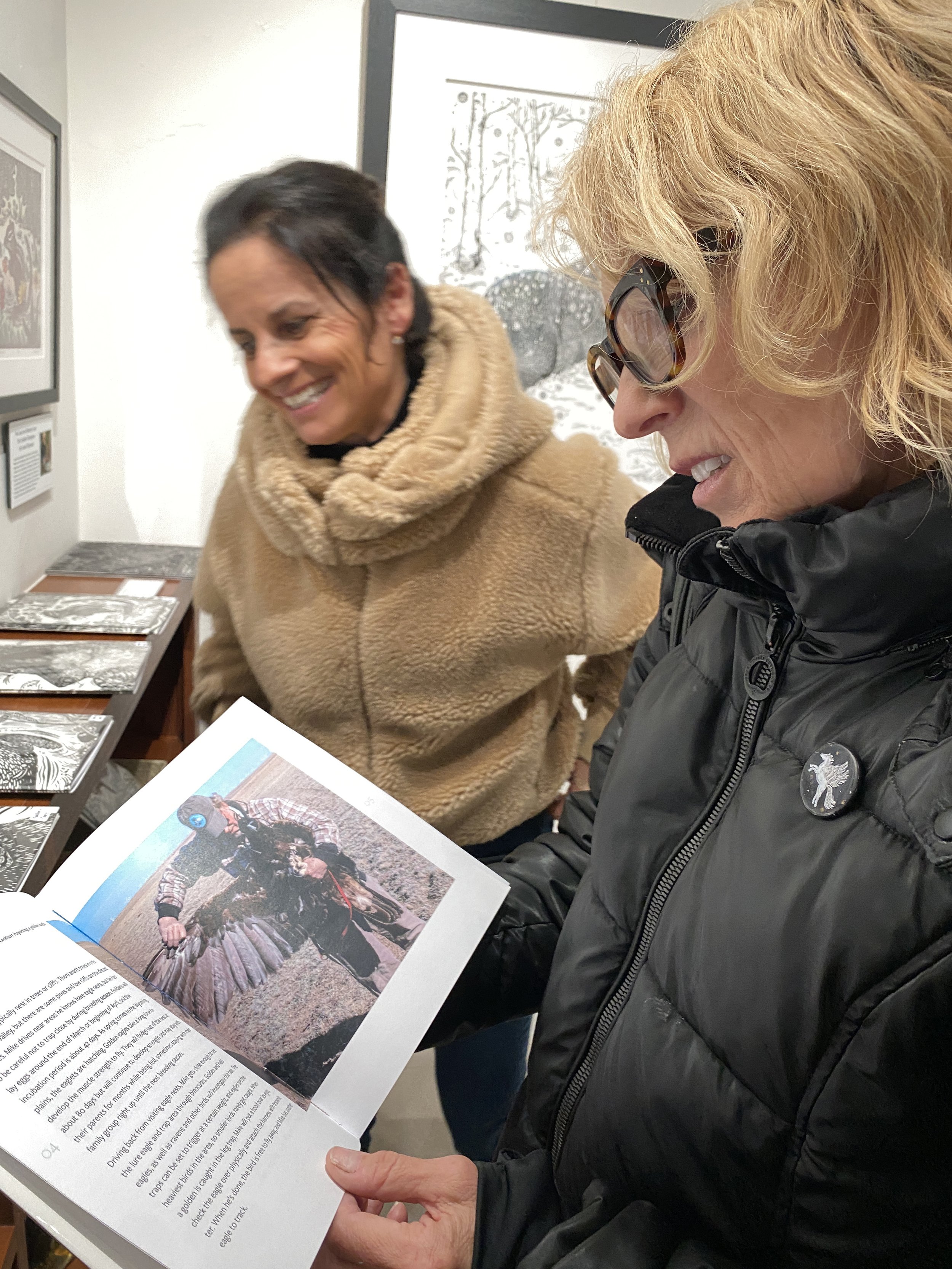I grew up in Laramie, Wyoming and antelope are a common sight in the area . Now that I live in northwest Colorado, we see them when we drive west into the dry rolling hills on the way to Utah. Even though they are familiar, I learned so many new things when I started studying these animals. For example, as a kid, we always called them antelope, but in fact they should be called pronghorn. These animals aren’t related to other antelope around the world, even though they look a lot like them. The horns of our North American pronghorn are one thing that make them unique. True horns on animals never shed, while antlers shed every year. The pronghorn have a combination- a bony core that doesn’t fall off, covered by a sheath that falls off every year and then grows back. True horns only have one point, but the horns of male pronghorn have a prong that faces forward, and that is how they got their name!
When I began this wildlife project, my dad introduced me to one of his former students, Joe Riis. When Joe finished college he was awarded a National Geographic Society Young Explorers Grant in 2007 to photograph the pronghorn migration in western Wyoming for the first time. After 10 years, lots of adventures, and adding in deer and elk migration studies, Joe produced the book Yellowstone Migrations with texts by several different authors who each have their own unique understanding of the area. This is a beautiful coffee table book featuring Joe’s intimate photos taken by camera trap during wildlife’s yearly travels through the Greater Yellowstone Ecosystem. Joe loves wide angle photographs that show an animal in their surroundings, not close up portraits. He is also curious about the connectivity of the landscape, and the intersection of humans and animals. These interests place wildlife in context in an important way.
Joe has done pioneering photography and film work about wildlife, won important awards, and brought the perils of migration in North America to the public. I was a little starstruck when we talked. But Joe is a very friendly guy and he gave me permission to create a linocut based on one of his photos. I chose a photo of pronghorn picking their way along a hillside of red dirt with a female in the lead.
In Joe’s photo there were no male pronghorn with their long horns, either because these were all females or maybe because the male’s horns had already fallen off for the year. Horns are shed from October through December and the new horns are usually growing in February or March. But for my piece, I wanted one of the animals to have the distinctive looking horns, so with artistic license, I just added him in behind the lead female.
These days, instead of using watercolor to paint my prints, I usually paint with gouache. This is a very similar paint but is more opaque with richer colors.
And below is my finished print! I had a lot of fun with the sky and clouds, if you can’t tell. I also loved spending time researching, interviewing and creating art about these interesting animals that always remind me of my home landscape in Wyoming.
If you would like to learn more about ungulate migrations and are a book lover like me, I also recommend Wild Migrations, an Atlas of Wyoming’s Ungulates. This book also includes photos by Joe Riis and author Emilene Ostlind, a fantastic storyteller and contributor to Yellowstone Migrations.
And stay tuned for the next post which will be my article about Joe and the pronghorn migration!









